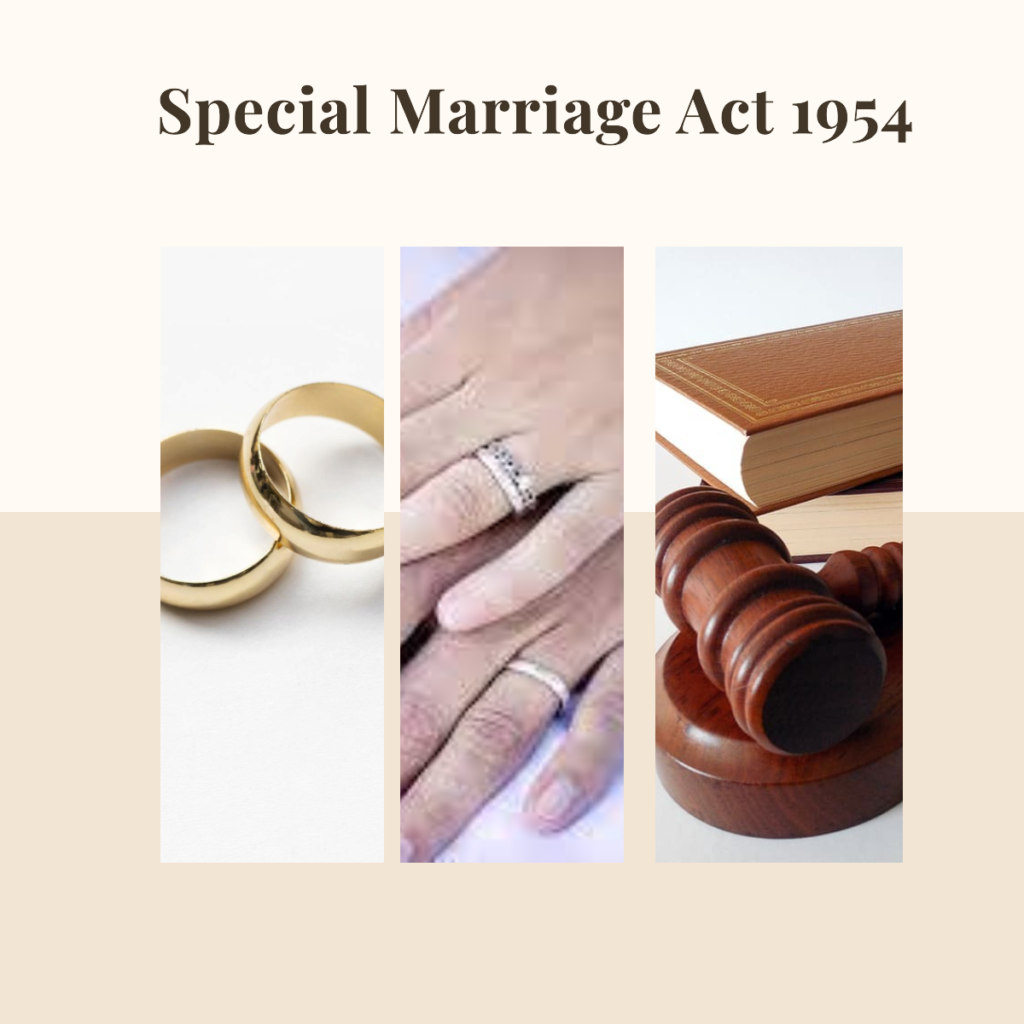Marriage is a sacred bond between two individuals, but it can also be a complex legal process, particularly in India, with its diverse religious and cultural landscape. For those seeking a secular and legally recognized marriage, the Special Marriage Act, 1954 provides an excellent solution. This act allows individuals from different religious backgrounds, as well as those who wish to have a non-religious ceremony, to solemnize their marriage under civil law.

What is Special Marriage Act, 1954?
The Special Marriage Act, 1954 is a comprehensive piece of legislation that governs civil marriages in India. It provides a legal framework for individuals of different religions, castes, and creed, or those who prefer a non-religious ceremony, to enter into a legally valid and recognized marriage. The act also ensures the protection of individuals’ rights and interests in the event of a dispute or separation.
Key Provisions:
Conditions for Marriage: The act sets out the conditions that a marriage must meet, including ensuring that there are no prohibited relationships within certain degrees specified in the act.
Notice of Intended Marriage: Couples must notify the Marriage Officer in their district, declaring their intention to marry. They must provide this notice at least thirty days before the wedding and include essential details about the parties involved.
Declarations
Both the bridegroom and bride are required to make specific declarations confirming their marital status, age, and the absence of prohibited relationships. False statements in these declarations can have legal consequences.
Marriage Ceremony Under:
The act facilitates a marriage ceremony conducted by a Marriage Officer, with the presence of the couple, the Marriage Officer, and three witnesses, thereby ensuring that the marriage is conducted in strict accordance with the law.
Registration Under Special Marriage Act 1954:
Following the marriage ceremony, the Marriage Officer issues a marriage certificate, confirming the marriage’s legality. This certificate holds significance for various legal purposes.
Protection of Rights:
The act also contains provisions for the protection of the rights and interests of married individuals, including maintenance, separation, and divorce.
Advantages of The Special Marriage Act:
The Special Marriage Act offers a secular approach, thereby allowing individuals of different religions or those with no religious affiliations to marry, thereby promoting secularism and inclusivity. Moreover, marriages conducted under this act hold legal recognition throughout India. Ensuring important rights related to inheritance, succession, and other legal matters. Additionally, the act establishes a uniform process for all civil marriages, thus simplifying the legal framework and ensuring consistency.
Protection: It offers legal protection to the rights and interests of spouses, particularly in cases of separation or divorce.
Conclusion:
The Special Marriage Act, 1954 holds significant importance for individuals aiming for a secular and legally recognized marriage in India. It provides a precise legal framework for marriage solemnization and registration, ensuring the protection of spouses’ rights and interests. If you’re thinking about a civil law marriage or have questions about the act. Our knowledgeable legal team is here to help.
For expert guidance on civil marriages and legal matters related to family law, please contact us.


Leave a Reply